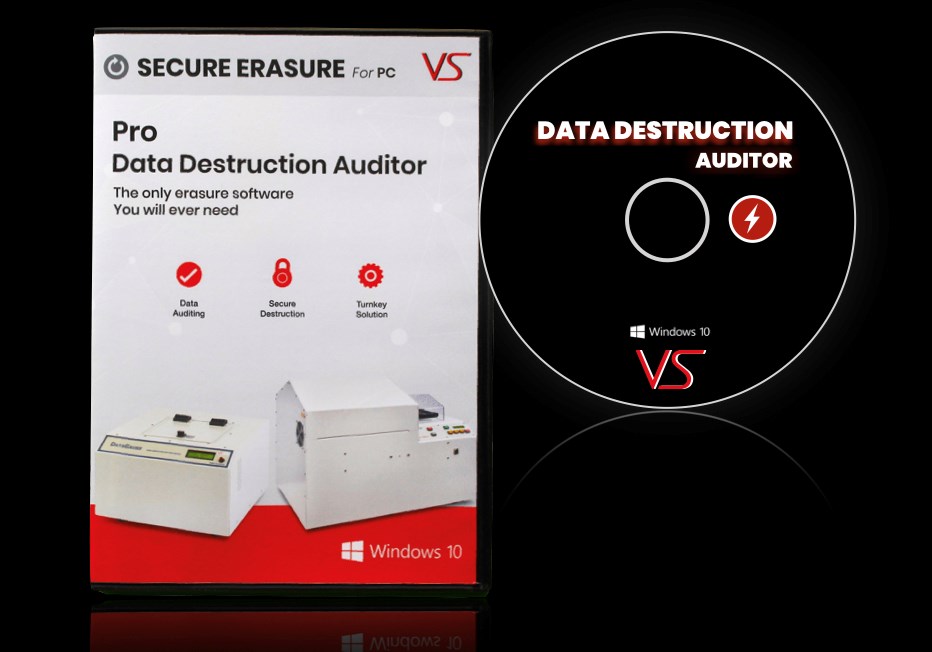Comprehending the Function of Data Destruction in Conditioning Cyber Security Defenses
Wiki Article
The Value of Effective Information Destruction Practices in Safeguarding Sensitive Info and Ensuring Computer System Safety
In a period where data breaches are significantly typical, the relevance of efficient information damage methods can not be overemphasized. Executing robust data damage approaches not just minimizes these dangers yet likewise straightens with legal compliance demands, guaranteeing that companies support their reputation and foster customer count on.Recognizing Information Destruction
Recognizing data destruction is important in today's digital landscape, where sensitive information can quickly be compromised. Efficient information destruction includes not just erasing documents but making certain that information is irretrievable through extensive approaches. This process is necessary for companies that deal with confidential customer info, intellectual building, or internal files, as any type of violation can bring about severe monetary and reputational repercussions.
Information devastation incorporates various techniques, including shredding physical media, degaussing magnetic storage gadgets, and using software-based solutions that overwrite data multiple times. Each technique serves a certain function and has to straighten with the sensitivity of the information being thrown away. Physical devastation is usually preferred for hard drives including highly confidential data, while software methods may be adequate for much less delicate details.
In addition, sticking to sector criteria and regulations, such as the General Data Security Guideline (GDPR) or the Wellness Insurance Policy Transportability and Accountability Act (HIPAA), is necessary for conformity and to minimize lawful threats. Organizations needs to establish a durable data destruction policy, train staff members on best techniques, and on a regular basis investigate their procedures to ensure that all delicate information is disposed of firmly and efficiently.
Risks of Inadequate Practices
Poor data damage methods reveal companies to considerable risks that can have far-ranging consequences. When delicate info is not correctly dealt with, it stays vulnerable to unauthorized access, which can bring about data violations and identity theft. Such cases not only endanger the safety and security of individuals yet also taint the company's credibility, causing a loss of customer depend on and possible financial consequences.Moreover, regulative conformity is significantly strict in lots of sectors. Failure to follow information destruction policies can lead to substantial fines and legal activities versus organizations. These fines can divert and strain monetary sources focus from core service procedures.
Furthermore, the misuse of residual data can result in intellectual home theft or corporate espionage, endangering competitive advantages (data destruction). The effect of insufficient information devastation expands past prompt economic losses; it can additionally cause lasting damages to brand name stability and market setting

Organizations have to identify that information safety is not exclusively concerning stopping violations; it likewise includes the responsible management of data throughout its lifecycle. Neglecting reliable information damage procedures can have devastating implications, underscoring the need for durable procedures to reduce these risks.
Ideal Practices for Information Damage
Executing effective information damage practices is essential for guarding delicate information and keeping conformity with regulatory criteria. Organizations must embrace a multi-faceted approach to make certain that data is irretrievable, thereby protecting against unapproved accessibility and potential violations.First, data need to be categorized based upon sensitivity, permitting organizations to use suitable destruction techniques tailored to the degree of risk. For digital data, making use of software-based data-wiping devices that adhere to industry criteria can effectively overwrite existing data. Physical damage methods, such as shredding or degaussing, are important for gadgets that store sensitive info, ensuring total eradication.
Developing a clear information retention policy is crucial, detailing exactly how long various sorts of details should be maintained prior to destruction. Routine audits of information storage systems are likewise essential to identify out-of-date or unneeded data requiring elimination.
Additionally, training workers on the relevance of data damage and the certain methods to follow fosters a culture of safety within the company. Ultimately, maintaining documentation of data damage refines gives accountability and supports compliance with exterior regulations and internal policies. By sticking to these ideal techniques, companies can dramatically mitigate the threats related to my website information direct exposure.
Legal and Conformity Factors To Consider

Failure to follow these laws can cause extreme penalties, including considerable penalties and reputational damages. Organizations must carry out a durable information destruction policy that lines up with these lawful structures and gives clear guidelines on the proper techniques of information disposal, whether physical shredding or electronic cleaning.
Moreover, keeping documents of information devastation tasks is crucial for showing compliance throughout audits or examinations. By focusing on lawful and compliance factors to consider, organizations can enhance their data safety pose and foster trust fund with customers and stakeholders, inevitably adding to an extra safe and secure information monitoring setting.
Advantages of Effective Information Damage
Efficient information damage methods extend beyond mere conformity; they supply substantial benefits to organizations that prioritize them. By making sure that sensitive information is irretrievably destroyed, companies minimize the danger of data breaches and the potential economic effects connected with them. This positive approach not just safeguards versus unauthorized access but additionally improves the general trustworthiness of the company in the eyes of customers and stakeholders.Implementing durable information destruction approaches, such as physical devastation of storage devices or sophisticated information wiping techniques, adds to the conditioning of an organization's cybersecurity stance. data destruction. It minimizes the possibility of copyright theft and secures proprietary information, consequently maintaining an affordable edge in the market

Final Thought
In final thought, efficient data damage methods are vital for guarding sensitive details and improving overall computer system protection. Eventually, a commitment to durable data devastation methods fosters a society of obligation, thereby enhancing a company's cybersecurity pose and maintaining client trust fund..webp)
Report this wiki page